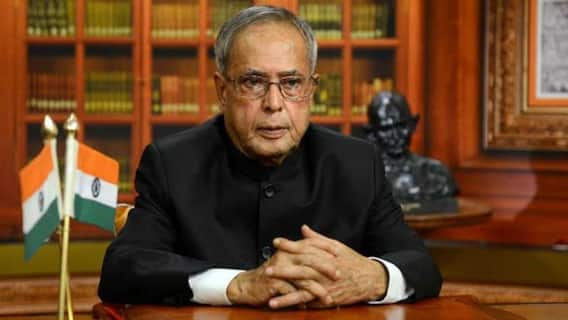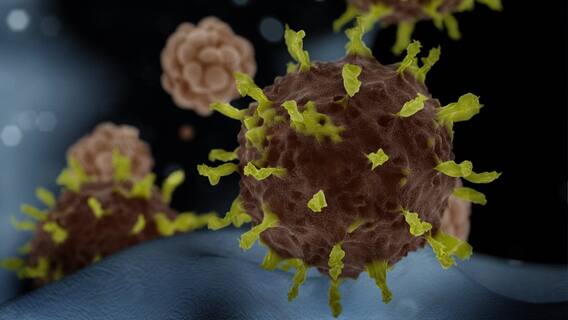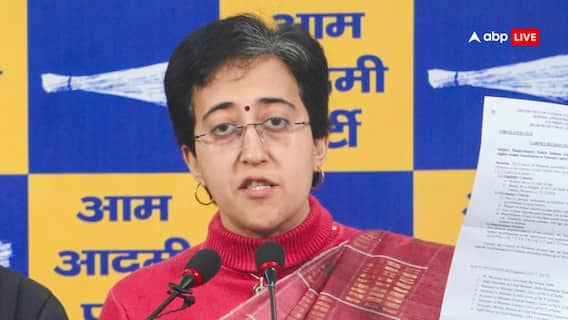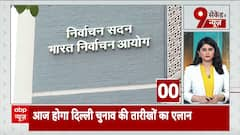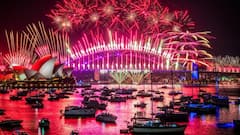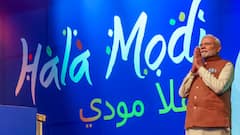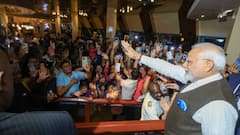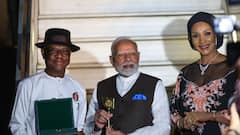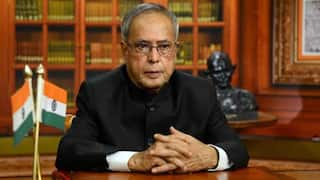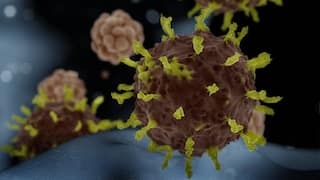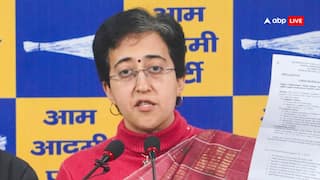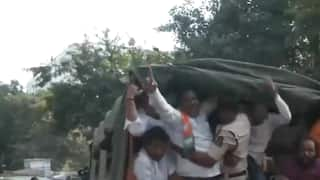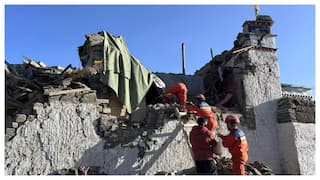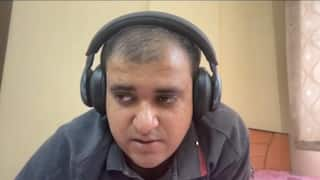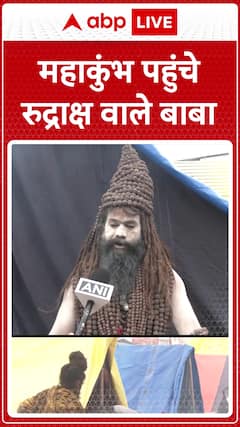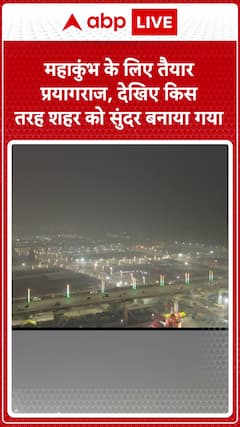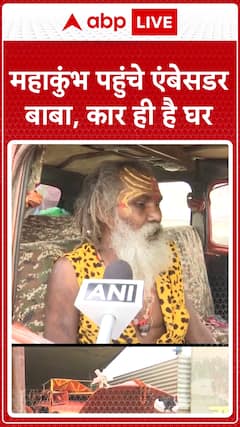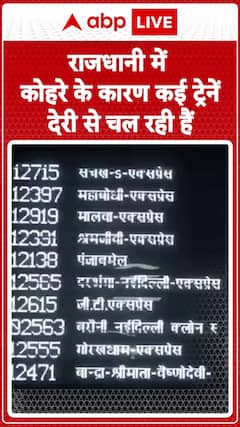Explorer
Advertisement
Jaish chief Masood Azhar: An overweight blue-eyed boy of ISI
Nearly 20 years after his release, during which he staged some audacious terror attacks in Jammu and Kashmir and hinterland, his Balakot camp where he trained terrorists to carry out suicide attacks, was in the cross hairs of Mirage 2000 jets, which achieved a spectacular success by destroying the resort-like facility and possibly killing up to 350 inmates.

JeM chief Masood Azhar. FILE Photo: AFP
New Delhi: Masood Azhar, the Jaish-e-Mohammed's chief whose terror academy in Balakot faced a blitzkrieg from Indian Air Force jets early Tuesday, is an overweight fugitive released by India in exchange for passengers of a hijacked Indian Airlines plane in 1999 and has since been a blue-eyed boy of Pakistan's external snooping agency ISI.
Nearly 20 years after his release, during which he staged some audacious terror attacks in Jammu and Kashmir and hinterland, his Balakot camp where he trained terrorists to carry out suicide attacks, was in the cross hairs of Mirage 2000 jets, which achieved a spectacular success by destroying the resort-like facility and possibly killing up to 350 inmates.
For all his reputation, Azhar was not a hard nut to crack when he was in the custody of Indian forces, according to officials. A former police officer, who interrogated Azhar after his arrest in 1994, said he got shaken up on the first "slap" from an army jawan, prompting him to blurt out details of his movements.
He was arrested in Anantnag in South Kashmir in February 1994 after he had entered into India on a Portuguese passport through Bangladesh. It was a chance arrest. He along with Sajjad Afghani were travelling in an auto when it was stopped by armymen at Khanabal.
"Both ran from the autorickshaw prompting the army men to nab them. Army men were happy to find Sajjad Afghani and had a little knowledge about the other," former Director General of Sikkim Police Avinash Mohananey, who interrogated Azhar many times during his two-decade tenure in the Intelligence Bureau, told PTI.
The 50-year-old Azhar, son of a retired school headmaster from Bhawalpur in Pakistan, always felt his custody in India was going to be short-lived and that attempts would be made for his release, he had said during his first meeting with Mohnaney at Kot Balwal jail in Jammu, immediately after his arrest.
Attempts were indeed made - the first one within 10 months of his arrest when some foreigners were kidnapped from Delhi in February 1994 and demanded his release. The plot failed when U.P. and Delhi Police managed to get the hostages freed from captivity in Sahranpur.
During that raid on Saharanpur raid, police arrested another militant, Omar Sheikh, who would eventually be released along with Azhar in exchange for the passengers of the 1999 hijacked flight IC814. Sheikh late became well known after he beheaded Wall Street Journal reporter Daniel Pearl in Pakistan.
Another attempt to release him was made by a shadow group of Harkat-ul-Ansar, Al-Faran, which demanded his release in exchange of five foreigners kidnapped in Kashmir in July 1995.
A tunnel was dug in Kot Balwal jail in 1999 to his escape but Azhar could not move out because of his unusual body structure -- he was overweight and had large belly that was too big to be squeezed through the tunnel. However, in the process, Sajjad Afghani was killed.
Finally, he was released by the BJP-led NDA government in 1999, along with Omar Sheikh and Mushtaq Ahmed Zargar alias 'Latram', in exchange of the passengers of the flight IC-814.
The Kathmandu-New Delhi plane was hijacked and taken to Kandahar in Afghanistan by Masood Azhar's men.
After the negotiations with hijackers failed, the government succumbed to their demands and the then external affairs minister Jaswant Singh took the three terrorists to Kandahar in Afghanistan in a special plane to ensure the release of passengers of the hijacked plane.
Thus began a new chapter of terror in Jammu and Kashmir as well as rest of India.
After his release in 1999, Azhar formed the Jaish-e-Mohammed and scripted many audacious terror strikes in India and went on to became a favourite of the ISI.
JeM announced its arrival in the Kashmir Valley in 2000 by carrying out a suicide car bombing attack at the gate of Badamibagh cantonment in Srinagar, the headquarters of the Army's 15 Corps. Two armymen were killed in the attack.
Later, it was involved in the attack on Parliament, the Pathankot air force base, army camps in Jammu and Uri, and the latest suicide attack on CRPF in Pulwama which claimed the lives of 40 personnel.
While in custody, intelligence agencies did not have to do much work on Azhar and he gave insights into the functioning of terror groups operating from Pakistan, the officer said.
"I had never been slapped by my father but for the first time in my life an Army jawan did so even before asking me any question'," the officer remembered Azhar telling him. "He was an easy man to handle and the slap had shaken him completely."
Azhar shared information about recruitment process and functioning of terror groups in Pakistan at a time when intelligence agencies were still grappling to understand the proxy-war unleashed by Pakistan's espionage agency ISI, Mohananey, a 1985-batch IPS officer, who headed the Kashmir desk in the agency at that time, said.
Azhar gave the Indian agencies vital insights into diversion of Afghan terrorists into the Kashmir Valley and the merger of Harkat-ul-Mujahideen and Harkat-ul-Jehad-e-Islami (HuJI) into Harkat-ul-Ansar, represented by him as its general secretary, he said.
The Jaish chief, during his stint as a journalist with 'Sada-e-Mujahid', a tabloid published from Karachi, had travelled in 1993 with a group of Pakistani scribes to some countries drumming up support for "Kashmir cause', he aid.
Follow Breaking News on ABP Live for more latest stories and trending topics. Watch breaking news and top headlines online on ABP News LIVE TV
View More
Advertisement
Trending News
Advertisement
Advertisement
Top Headlines
India
Health
Election 2024
Health
Advertisement







